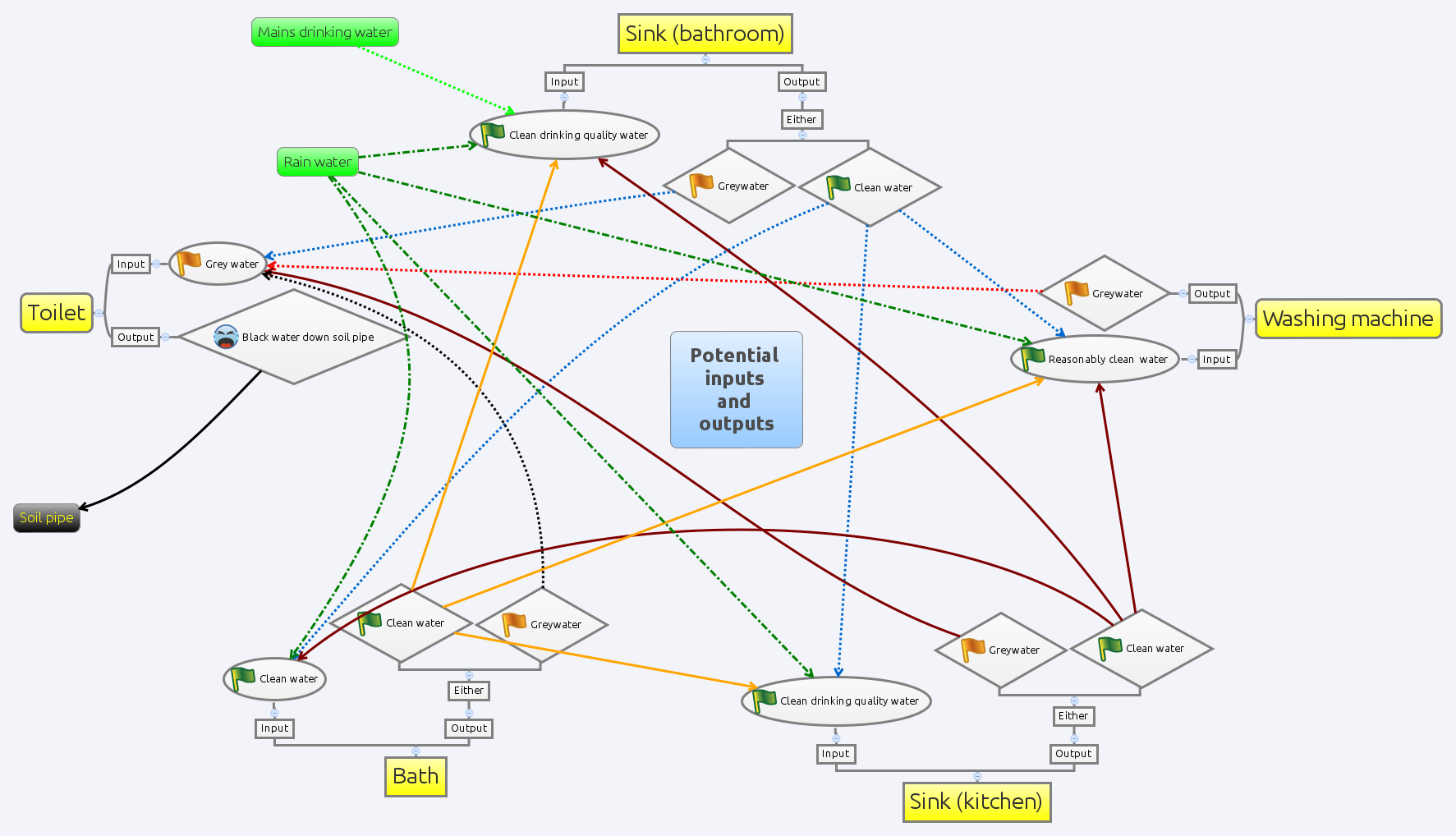Overview
This design looks at conserving water usage in a small flat in central London where we are not able to do any plumbing work. The plumbing is part of the building and cannot be altered without permission. So this design looks at how to create an easy system to catch water that is normally wasted and reuse it in an appropriate way. Designs like this are interesting to me as they may be small in scope, but the implications of this design are quite far reaching. I have included it here to show that permaculture does not need to be a huge grand scale project, but its tools and principles can be used in almost any environment.
Choosing a methodology
Given this is a simple design, CEAP may have been the best suited methodology, however, I wanted to use SADIM to see who it worked on a small design
Working through the methodology
Survey
In the survey, I looked at all the places where water is used. I also looked at where the water comes from and what quality the water is as it enters each system. I then look at what the quality of water is like as it leaves the system. In some cases this can be either grey or clean water, e.g. when washing hands, if the water is too hot or too cold, we often let the water run down the sink which is a huge waste of clean drinking water. Then once the water is the right temperature we may or may not use soap, hence such a difference in water quality.
Analysis
Having looked at where water comes in from and where it typically goes to, including the quality of water as it leaves system, I then try and make sense of the data. I do this by making in input output web. For every element which outputs clean water I have linked to an element that needs clean water. For every element that outputs grey water, I link to elements that can take grey water as its input. The elements are in yellow boxes, with its inputs in a circle, and outputs in a diamond shaped box. Clean water has a green flag, and greywater an amber coloured flag. Black water has a yuck face. The elements in green boxes are external elements, in this case mains water and rainwater. And the black box is the black water outlet (soil pipe). I have then used a distinct colour for every elements output, to indicate where it could potentially go to.
The analysis above was very helpful in identifying what possible connections I could make. However not all the connections were possible in real life. So the next stage is to look and asses each connection to see how feasible it is. Where I felt it was feasible I have added a green tick, and where I felt it was too difficult I have put a red flag. I could easily have used the PMI tool here, but given the simplicity of the decisions I felt it was unnecessary. One decision that was not reflected on this design was that I looked at the possibility of capturing rainwater and it was not possible in this flat.
Design
Having done the hard work of identifying what may and may not be possible, the design process was made very easy. I took all the points I thought were possible (which are listed at the top of the next mind map), and ran them through the attitudinal principles. This helped me to see some connections and some simple solutions to not wasting water.
Now while some of these solutions may seem totally obvious to many, the beauty in this design is the clarity with which I could make these decisions and most importantly to make a decision on which areas not to waste time looking at.
Implement
The implementation in this case was very simple, and did not warrant a detailed plan.
Manage
Having implemented the design, all that remains is to evaluate and tweak the design. This next mind map looks at how well the system functioned. At the end of most designs I normally use the permaculture 4 questions to evaluate the project, however in this case, because the project was so simple I decided to keep the evaluation very simple and mention the areas where i did need to make some adjustments.
Summary
This simple design was really helpful in working out how to conserve water in my flat. While some of the solutions may seem obvious, what is interesting in this design is the methodology that got me so quickly to be able to make a decision. The input output analysis (element cards or design web) very neatly put into perspective what possibilities open to me. This allowed me to quickly analyse what is likely and what is not, so i could concentrate on the areas that were likely.
Having implemented this design, as with most designs, there were a few tweaks necessary, which helped make the system work effortlessly.
Since making this design, I moved home, and have realised I can implement parts of this design effortlessly in my new home. It has been so integral to my daily routine, that in places where I cannot do this I feel totally guilty that I am wasting so much water.





